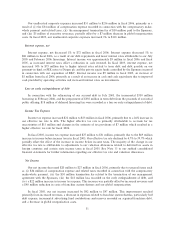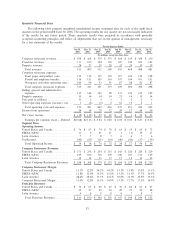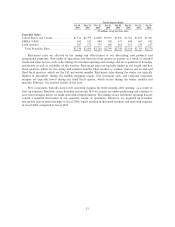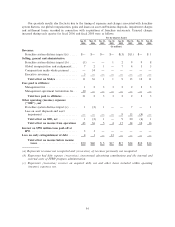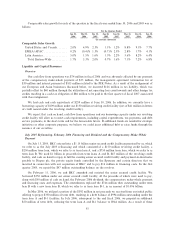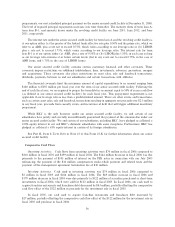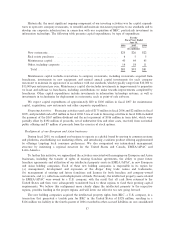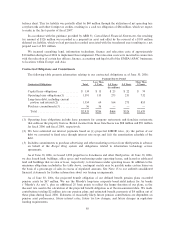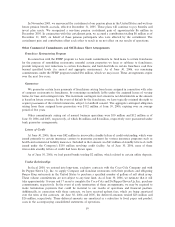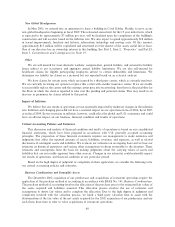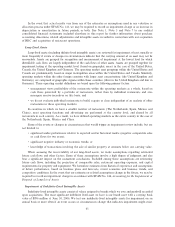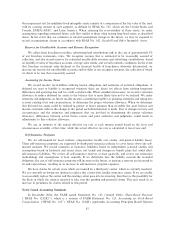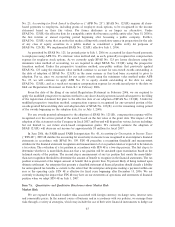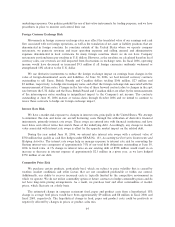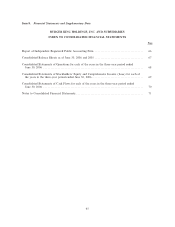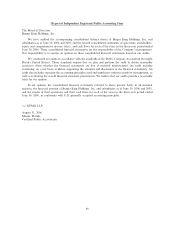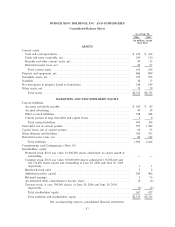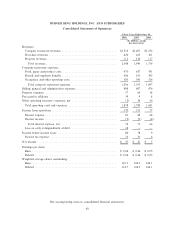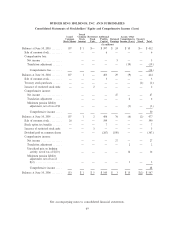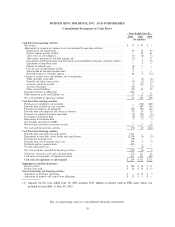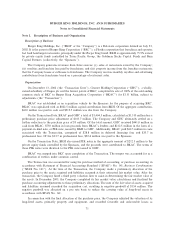Burger King 2006 Annual Report Download - page 73
Download and view the complete annual report
Please find page 73 of the 2006 Burger King annual report below. You can navigate through the pages in the report by either clicking on the pages listed below, or by using the keyword search tool below to find specific information within the annual report.In the event that actual results vary from any of the estimates or assumptions used in any valuation or
allocation process under SFAS No. 141, we may be required to record an impairment charge or an increase in
depreciation or amortization in future periods, or both. See Note 1, Note 3 and Note 7 to our audited
consolidated financial statements included elsewhere in this report for further information about purchase
accounting allocations, related adjustments and intangible assets recorded in connection with our acquisition
of BKC and acquisition of restaurant operations.
Long-Lived Assets
Long-lived assets (including definite-lived intangible assets) are reviewed for impairment at least annually or
more frequently if events or changes in circumstances indicate that the carrying amount of an asset may not be
recoverable. Assets are grouped for recognition and measurement of impairment at the lowest level for which
identifiable cash flows are largely independent of the cash flows of other assets. Assets are grouped together for
impairment testing at the operating market level (based on geographic areas) in the case of the United States,
Canada, the United Kingdom and Germany. The operating market asset groupings within the United States and
Canada are predominantly based on major metropolitan areas within the United States and Canada. Similarly,
operating markets within the other foreign countries with larger asset concentrations (the United Kingdom and
Germany) are comprised of geographic regions within those countries (three in the United Kingdom and four in
Germany). These operating market definitions are based upon the following primary factors:
‚ management views profitability of the restaurants within the operating markets as a whole, based on
cash flows generated by a portfolio of restaurants, rather than by individual restaurants and area
managers receive incentives on this basis; and
‚ we do not evaluate individual restaurants to build, acquire or close independent of an analysis of other
restaurants in these operating markets.
In countries in which we have a smaller number of restaurants (The Netherlands, Spain, Mexico and
China), most operating functions and advertising are performed at the country level, and shared by all
restaurants in each country. As a result, we have defined operating markets as the entire country in the case of
the Netherlands, Spain, Mexico and China.
Some of the events or changes in circumstances that would trigger an impairment review include, but are
not limited to:
‚ significant under-performance relative to expected and/or historical results (negative comparable sales
or cash flows for two years);
‚ significant negative industry or economic trends; or
‚ knowledge of transactions involving the sale of similar property at amounts below our carrying value.
When assessing the recoverability of our long-lived assets, we make assumptions regarding estimated
future cash flows and other factors. Some of these assumptions involve a high degree of judgment and also
bear a significant impact on the assessment conclusions. Included among these assumptions are estimating
future cash flows, including the projection of comparable sales, restaurant operating expenses, and capital
requirements for property and equipment. We formulate estimates from historical experience and assumptions
of future performance, based on business plans and forecasts, recent economic and business trends, and
competitive conditions. In the event that our estimates or related assumptions change in the future, we may be
required to record an impairment charge in accordance with SFAS No. 144, Accounting for the Impairment or
Disposal of Long-Lived Assets.
Impairment of Indefinite-Lived Intangible Assets
Indefinite-lived intangible assets consist of values assigned to brands which we own and goodwill recorded
upon acquisitions. The most significant indefinite lived asset we have is our brand asset with a carrying book
value of $896 million at June 30, 2006. We test our indefinite-lived intangible assets for impairment on an
annual basis or more often if an event occurs or circumstances change that indicates impairment might exist.
61


